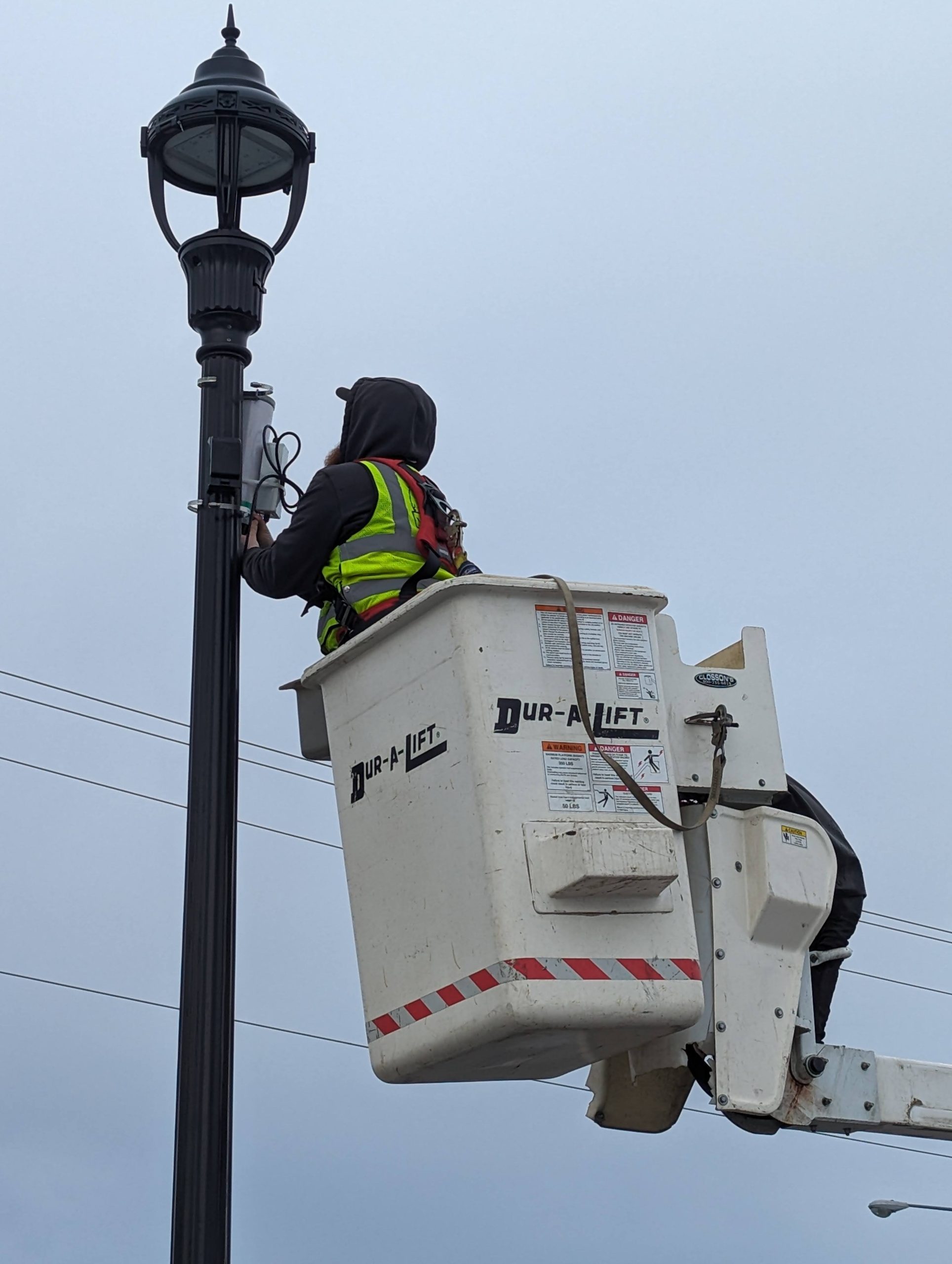-
April 25, 2024
Computer Vision for Pedestrian Traffic Monitoring

 The University of Idaho is working with the City of Moscow, Idaho, to test computer vision sensors provided by Numina, a new start-up company based in New York City. The sensors use sophisticated algorithms to interpret visual data to recognize pedestrian behaviors, such as crossing the street, waiting at crosswalks, or sudden movements. Compared to traditional methods like manual observation or radar-based systems, computer vision sensors offer higher precision and scalability, making them a more effective solution for enhancing pedestrian safety in urban environments. The data is saved in a cloud-based system that is easy to query and download for further analysis.
The University of Idaho is working with the City of Moscow, Idaho, to test computer vision sensors provided by Numina, a new start-up company based in New York City. The sensors use sophisticated algorithms to interpret visual data to recognize pedestrian behaviors, such as crossing the street, waiting at crosswalks, or sudden movements. Compared to traditional methods like manual observation or radar-based systems, computer vision sensors offer higher precision and scalability, making them a more effective solution for enhancing pedestrian safety in urban environments. The data is saved in a cloud-based system that is easy to query and download for further analysis.Six sensors were purchased as part of PacTrans project in 2022. The City of Moscow installed two sensors at a dangerous downtown intersection where hundreds of pedestrians and bicyclists cross a busy arterial to get to campus every day. Three years ago, the City installed a pedestrian-actuated rapid flashing beacon at this location to improve safety; however, the City has determined that more needs to be done to protect vulnerable road users. The City is considering the possibility of building a pedestrian underpass that will cost over $3 million. The U of I team will use the computer vision sensors to analyze existing traffic volumes and interactions between vehicles and pedestrians. The results will help the City prioritize transportation infrastructure.




